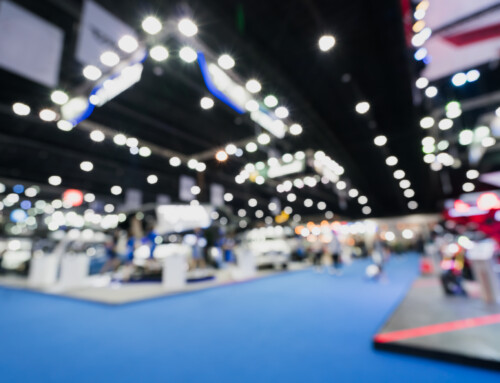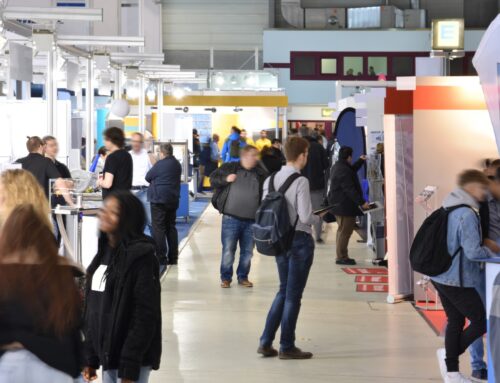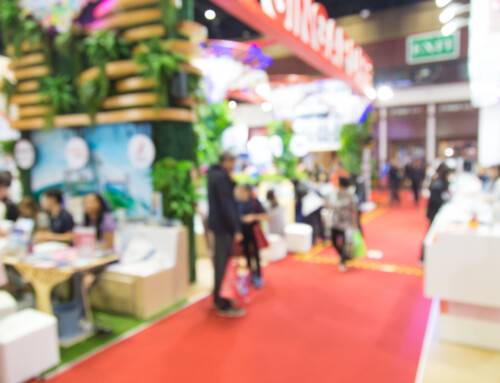Exhibiting and trade show exhibit tips and advice you need to know to make your next trade show the most successful yet.
-
Why are you at the trade show?
You may be exhibiting at a trade show for multiple reasons or just one:
- Qualified sales leads.
- Make sales.
- Conduct business meetings.
- Promote new products or services.
- Educate your audience.
- Grow your brand equity and awareness.
- Recruit distributors, dealers, representatives, or even employees.
- Perform competitive or market research.
- Focusing on the reason you’re there will help you focus on the goal. That is a big one when it comes to success.
-
Know your audience and focus your exhibit on them.
Take the time to identify your perfect prospect. Demographics, industry, needs, budgets, and more all play a huge role in setting up your booth for your product or service at each show. Select the best possible solutions to present in your exhibit to your target audience. This could be based on many different factors, but typically, it simply needs to be what you want the perfect prospect to buy. That doesn’t always mean your best or newest product.
-
Design an attractive, functional, uncluttered trade show exhibit.
Keep your exhibit open and inviting. Don’t block more than 20% of the aisle with counters, walls, or surplus exhibit staff. One of the biggest issues I see is a booth that has walls, which keep people from entering the booth on the side they are on. Use color, light, and movement to attract attendees. This means lighting and moving displays to draw people in. Also, consider using large, brightly colored graphics. Colors like yellow, green, and blue will draw the eye, making you more visible. Then, keep them in your booth using engaging presentations, hands-on demos, and a professional and good-looking staff that is dressed appropriately.
-
Set strategic and measurable trade show goals.
You really need to establish realistic goals based on your target audience. For example, if your goal is to talk to a certain amount of people, then you need to know how many attendees there are and what percentage of those attendees you want to talk to. Furthermore, from the number of people you want to talk to, what percentage should turn into qualified leads?
-
Promotion — Pre-Show, At-Show, and Post-Show
The most important success is trade show marketing. That is because it affects how things will go pre-show, during the show, and, of course, post-show. There are a couple of things to consider. The “official trade show publication” is not the only trade show publication. In fact, more often than not, they are only distributed at the show. While this isn’t necessarily a bad thing, it does miss out on a huge opportunity. Other publications can and sometimes are distributed at hotels and shuttle stops on a daily basis. This creates a massive opportunity to be seen and drive more traffic than ever before.
Trade shows also off a digital solution. Again, this is not bad, but extremely limited and, oftentimes, set up to over-report and inflate numbers. Consider an outside source for your digital needs, one that has email and display capabilities. For example, being able to geo-fence the trade show location, as well as the official and non-official event hotels, is a big win.
-
Prepare your exhibit staff for trade show sales
Trade shows offer a unique sales opportunity and model, which also comes with its own unique challenges. Make sure your staff has practiced at the booth before the show. Role-play using props and presentations to make sure everyone is on the same page and understands how to sell at a trade show. Make sure the sales staff knows how to use the props, conduct demos, and use presentations. Also, make sure the staff is standing at all times; they should also be smiling. This will help to create a welcoming environment.
Finally, the trade show industry tells us that no follow-up is done on 80% of show leads! Make sure your sales staff takes down all lead information accurately and is prepared to follow up within 48 hours. The best I have seen is a salesperson setting up breakfast, lunch, and dinner meetings during the show so that follow-up is immediate.



